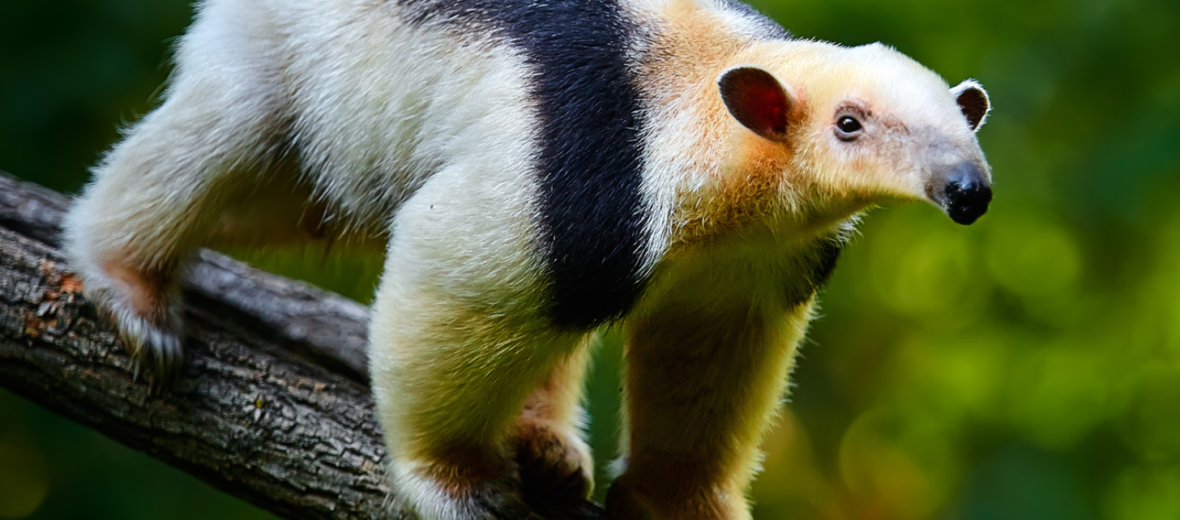
The tamandua is often referred to as the lesser anteater because it is so much smaller than its relative, the giant anteater. Central and South American forest and scrub habitat are where these critters call home. There are 2 known species; the tetradactyla (southern tamandua) and mexicana (northern tamandua). Their coat color varies depending on where they live. In the south, they have dark markings over their shoulders and back, while the rest of their bodies range from brown to blond. In the north and west, they may have lighter markings or be a solid black, brown, or blonde, and have no markings.
First the Stats…
Scientific name: Tamandua tetradactyla
Weight: Up to 19 lbs.
Length: Up to 35 inches
Lifespan: Up to 9+ years
Now on to the Facts!
1.) Jaguars and margay are their main predators.
2.) Most of the time, they avoid predation due to the fact that they smell terrible. They normally have a funk about them, but when threatened, they release a foul odor, similar to that of a skunk. If their B.O. doesn’t get the hint across, their stink blast certainly will.
3.) The huge front claws not only help them to climb trees, but also to dig through ant and termite burrows. Plus they make a good weapon, when needed, for self defense.
4.) Their course, twisted, thick hair helps keep stinging insects from hurting them.
5.) A specialized mouth and tongue assist in consuming up to 9,000 ants a day!
But wait, there’s more on the tamandua!
6.) Prehensile tails help them in a few ways… They are helpful with climbing trees, they’re used for balance when they have to stand on their hind feet, and they also server as a pillow.
7.) With small eyes, they don’t have the best eyesight. But they do have excellent hearing and a great sense of smell.
Did you know…?
The blast of stinky fluid they use as a defense is believed to be 4x more potent than a skunk’s!
8.) Tamanduas have one of the lowest body temperatures of any land mammal, at about 91°.
9.) Amazon natives will occasionally use a tamandua to rid their home of ants and termites.
10.) These critters are normally solitary but will look for a mate in the fall. The mother will give birth to a single baby and takes care of it on her own.
Now a Short Tamandua Video!
Also, check out the Critter Science YouTube channel. Videos added frequently!
Want to suggest a critter for me to write about? Let me know here.



